Fragrant pomegranates, noble roses, juicy berries, spicy peppers, and autumn tree crowns – all of these are red in its variety. It may seem too aggressive for use in interiors. But we are ready to decisively argue against this outdated misconception! Let’s figure out together where and how to use red and what to combine it with!
Features
Expressive red color is perfect for accents, contrasts, and bright inserts. It motivates, sets an active mood, invigorates, and tones. At the same time, it instantly attracts attention and simply does not leave household members and guests indifferent.
Red immediately sets the mood, creates a sense of celebration and festivity, and sets the atmosphere in the room. Shades of different saturation and depth can be delicate and romantic, provocative and bold, or deep and noble. In such a room, it is always warmer and cozier, even if it is a concise minimalism or a fanciful classic style.

Combining with other colors
Pure red is hardly ever used in interiors because such an interior would be too provocative or even vulgar. It can be subdued with calm basic colors or diluted with other bright shades.
Red and white
If you prefer fresh and light interiors, spaciousness and elegance, this is what you need. White softens the boldness and aggressiveness of red, and together they fit perfectly in both high-tech and elegant Eastern styles. This is a completely self-sufficient combination that does not necessarily need to be diluted with anything else, but if desired, it can be complemented with black or dark brown.

Red and gray
Even such a rich, juicy, and warm color can be made cooler and stricter by combining it with gray. Red gloss with steel and chrome looks ultra-modern and slightly futuristic. Deep shades go well with pale grays, while bleached pastels go well with graphite.

Red and yellow
If you constantly lack light, sun, and positive emotions, boldly combine red with yellow. They will need a neutral background – white, gray, milky, beige, or cream. But this is one of the most cheerful combinations that can be found in interiors.

Red and brown
All shades of wood are one of the best additions to expressive red because they are always appropriate. Light birch or oak looks visually lighter, while dark walnut or wenge fits perfectly in the most luxurious classic interiors. Depending on the chosen style, use contrasting elements, gold, or a neutral base.

Red and blue
For several seasons now, the fashion principle of original contrasts that goes beyond the banal black and white range has been in trend. The red-blue combination is the brightest, most common, and applicable example in real life. At the same time, both scarlet with ultramarine and coral with muted steel blue are equally good.

Interior styles and red color
Despite the complexity and ambiguity of its shade, red easily fits into completely different interiors. And the secret is extremely simple: natural colors are always universal in application and easily complement each other. Therefore, the fashion for red has never gone out of style, smoothly transitioning from Victorian palaces to extravagant pop art, as if straight from the pages of comics.
Modern style
Bright accents are always used on top of a neutral white, beige, gray, or brown base in modern interiors. They just give the room individuality and reflect the inner world of the owners. Red in all its variety is one of the best options for a style that combines the main features of classicism and minimalist futurism.

Art Deco
The whimsical mixture of elegant neoclassicism and sensual modernism gave rise to the Art Deco style with all its consequences. It combines the legacy of cubism, geometric abstractions, ethnic styles’ exoticism, and futuristic trends. The complex and multifaceted red color could not stay aside with the snowy white walls, black leather furniture, and golden details.

Classic style
English, French, Victorian, Baroque, Rococo – all these interiors can be combined under the concept of the classic style. They differ significantly in details but maintain the main common features: symmetry, laconic forms, luxury of materials, balanced composition and color scheme, in which red is firmly held in the top five.

Loft
Bright and demonstrative accents look natural in a loft since it is originally a deliberately rough industrial style with bold eclectic details. The loft came to us from factories converted into creative workshops and exhibitions.

Japanese style
The special aesthetics of Japanese style gravitates towards the same special harmonious contrasts. Red and black together with white or beige are a traditional combination for such interiors. The Japanese attach special importance to colors and prefer natural shades – brown, green, cream, gray. And on them, precise neat strokes – a little cherry, burgundy, and graphite.

Interiors in Red Tones – Photos
Using the color red in interior design should be done cautiously and in moderation to avoid irritating and agitating the nervous system. Bright red is not the best choice for a bedroom or a child’s room, but it can be appropriate for a dining room or living room. Less aggressive shades include coral, terracotta, burgundy, and cherry – they work well everywhere!
Red in Kitchen Interior
It is believed that the color red stimulates appetite – and this trick is used by popular fast-food chains and many restaurants. The juiciest berry shades in the kitchen harmonize beautifully with wooden cabinets and futuristic furniture made of metal, glass, or acrylic. Here you can confidently use red cabinet fronts or even paint the walls, as well as the backsplash above the work area.



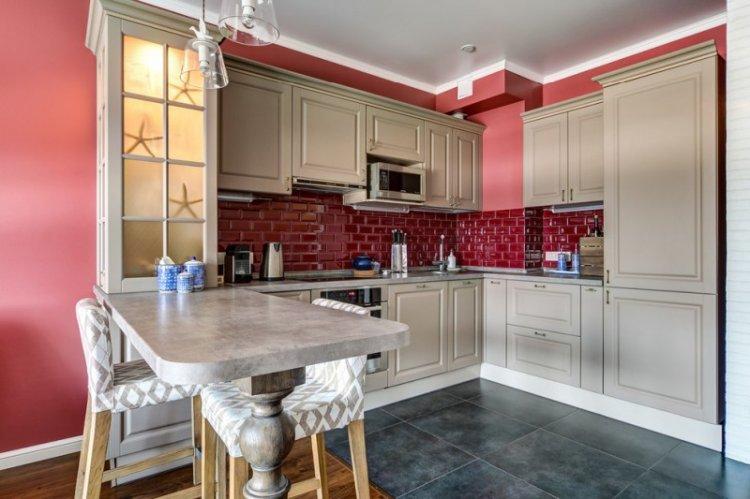


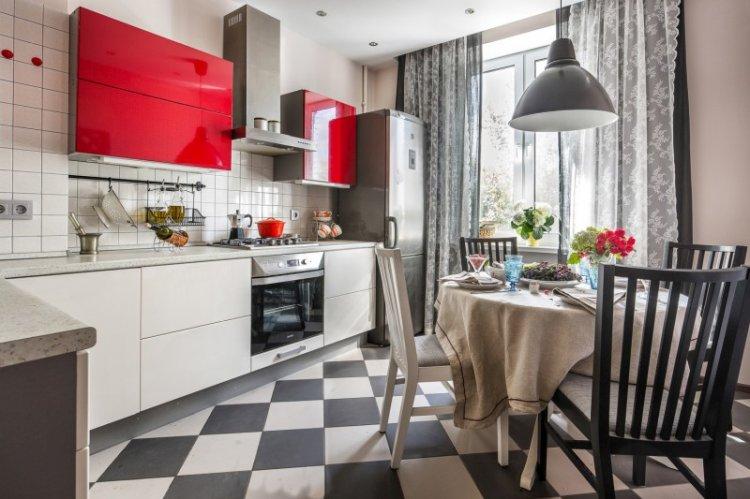



Red in living room interiors
A large and wide red sofa in the living room will become the real star of your apartment. Bright colorful posters will complement modern interiors from minimalism to pop art. The bold invigorating color is perfect for a place where you plan to entertain guests, host parties, play board games, or enjoy pizza.






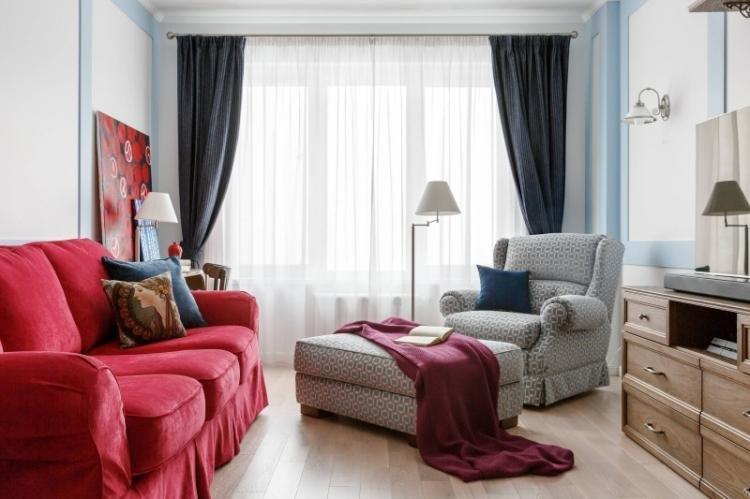
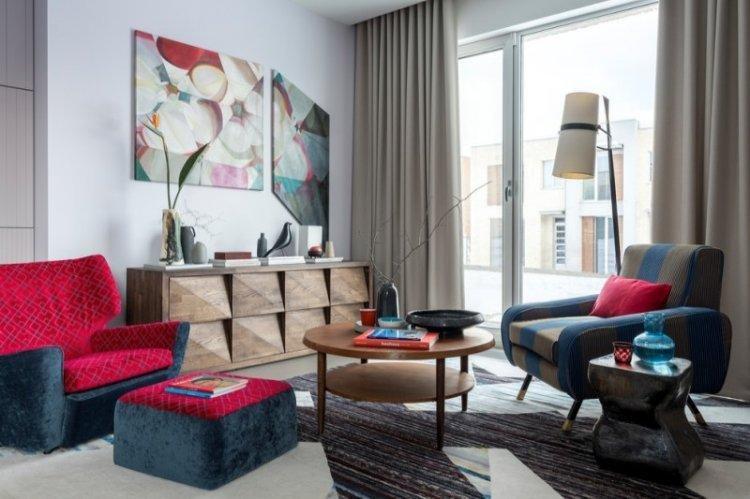
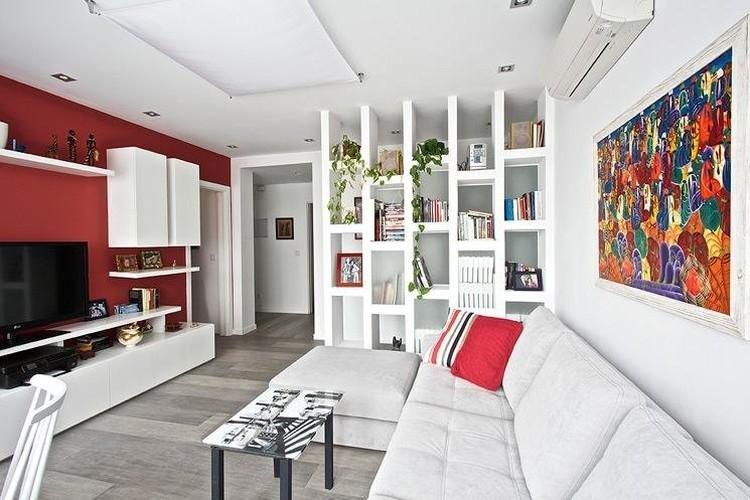

Red in bedroom interiors
Despite the stereotypes about aggressiveness, lovers of romance do not completely give up on red in bedroom design. Pay attention to softer variations: coral, geranium, or strawberry. And in classic bedrooms with luxurious carved furniture, gilding, and a canopy, wine, cherry, burgundy, or dark crimson will fit in perfectly.

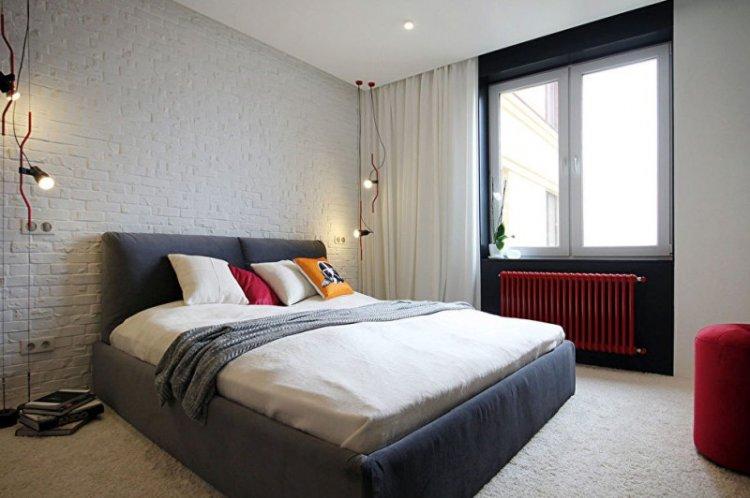

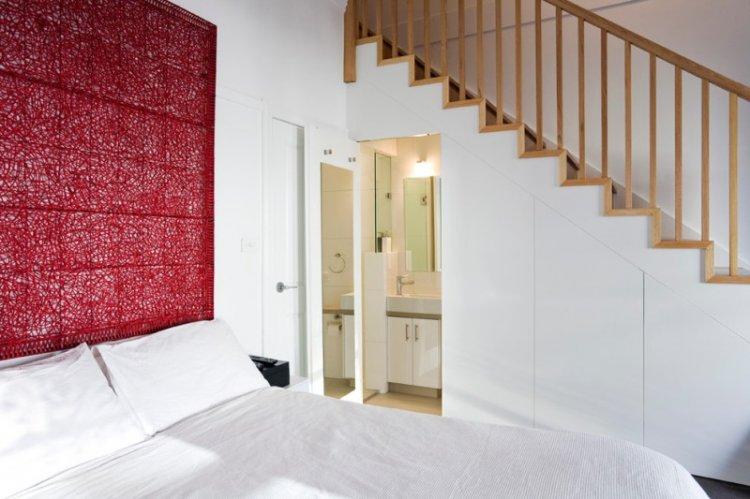






Red color in the interior of the bathroom
Few places allow you to be as bold with any shade of red as in the bathroom. You don’t spend hours on end here, so even the most vibrant crimson or carmine won’t become tiresome. Instead, a bathroom with red accents always feels a bit warmer, which you’ll surely appreciate on chilly autumn evenings and frosty winter mornings.
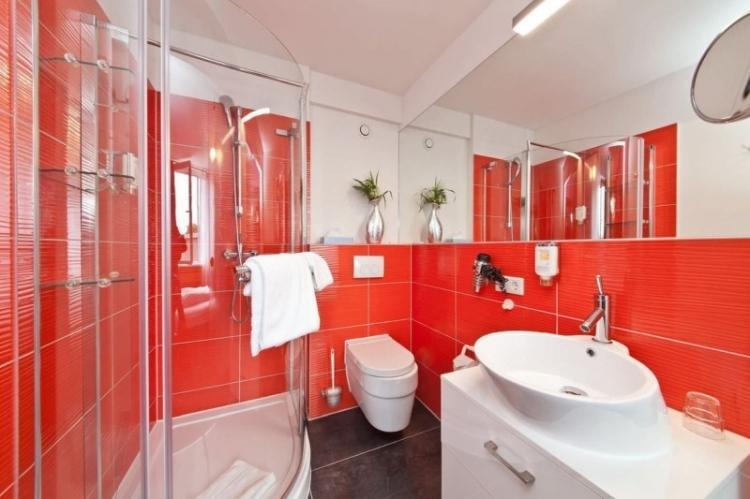









Children are sensitive to external stimuli, so use saturated red colors sparingly and cautiously. Bright posters, toys, bedding, or accessories can all add a pop of color. Don’t limit yourself to just red either; yellow, orange, blue, or green against a light monochromatic background can also work well. Over time, the room can evolve and grow with your child.

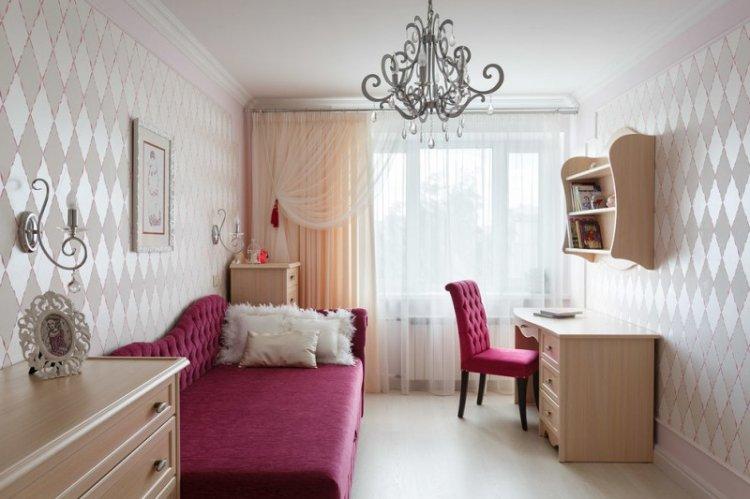

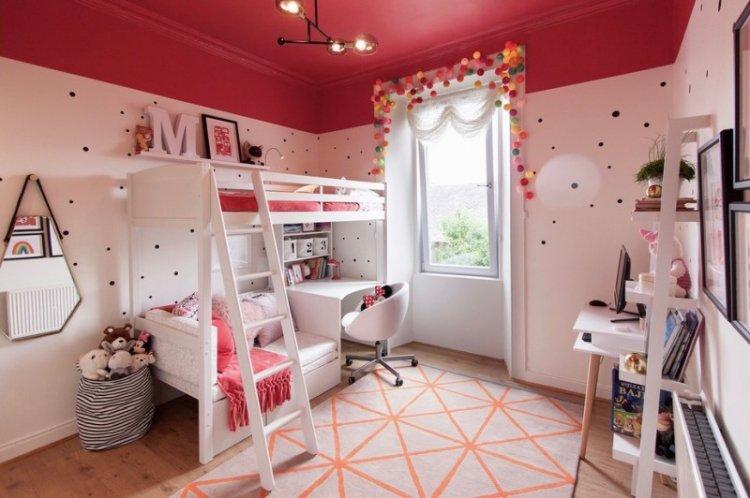






Red color in the interior of the hallway and corridor
An excess of red in a small space can visually shrink and overload it, so it’s important to balance and dilute the color. However, small red accents can make a small hallway much cozier and inviting. Don’t forget about mirrors, as they work particularly well in a hallway and complement the color red nicely!














Leave feedback about this